
- Home Page
- Accepted
Paintings & Copies - Doubtful
Attributions - Doubtful Textual References
- Alternative
Titles - Collectors &
Museums - Bibliography
- Search Abecedario
- Watteau &
His Circle
X. Fête champêtre
Entered June 2020; revised September 2021
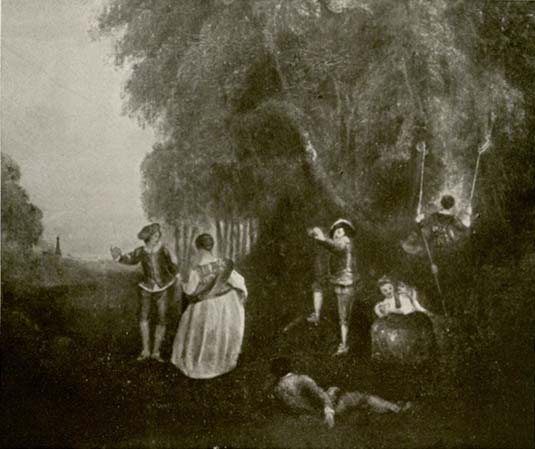
Whereabouts unknown
Oil on canvas
47 x 55 cm
ALTERNATIVE TITLES
Danse champêtre
Eine vornehme Gesellschaft
PROVENANCE
Meran, Austria, collection of Dr. Theodor Christomannos. His sale, Vienna, Dorotheum, October 24, 1913, lot 651: “FRANZÖSISCH, XVIII. JARHRHUNDERT, in der Art Lancret . . . EINE VORNEHME GESSELSCHAAFT unterhält sich bei Spiel und Tanz in einem Schlosspark. Ölgemälde auf Leinwand. 47 x 55 cm. Siehe Abbildung Tafel 48.”
SELECT BIBLIOGRAPHY
Ferré, Watteau (1972), 2: cat. P 46.
REMARKS
This work is known to me through an old photograph. Although it was probably attributed to Watteau, it is readily recognizable as a pastiche. That can be seen in its very structure: a series of juxtaposed figural units that do not cohere into an organic whole. The dancers are separated from the right half of the composition by an imaginary vertical boundary. Likewise, the lutenist stands above the recumbent youth much like a triumphant warrior standing over his vanquished enemy.
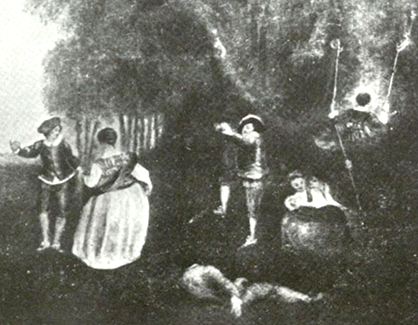
Anonymous artist, Fête champêtre (detail).
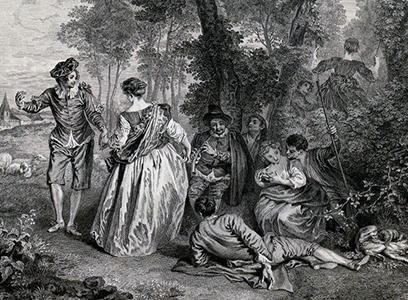
Nicolas Tadieu after Watteau, Le Plaisir pastoral (detail), engraving.
This pastiche is largely based on Watteau’s Le Plaisir pastoral. The dancing shepherds, the recumbent youth, the man aggressively kissing his companion, the woman on a swing and the man pushing her. Since the figures in the pastiche are the reverse of the original painting, now at Chantilly, they must have been taken from Nicolas Tardieu’s engraving in the Jullienne Oeuvre gravé.
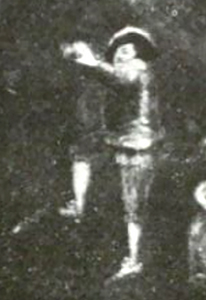
Anonymous artist, Fête champêtre (detail).
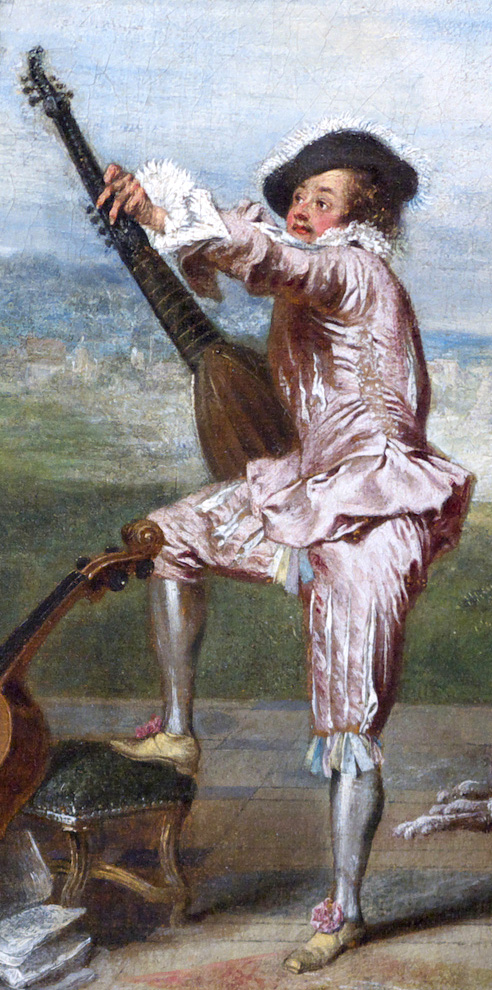
Watteau, Les Charmes de la vie (detail), oil on canvas. London, Wallace Collection.
The gentleman tuning his theorbo (archiluth) was taken from a different Watteau composition, the celebrated Les Charmes de la vie, now in the Wallace Collection. Whereas Watteau posed the man’s upraised leg on a footstool, the pasticheur unconvincingly posed the leg on a slight rise in the ground.
All things considered, the painting is not successful. Ferré’s repetition of the attribution of this work to Lancret is not useful.